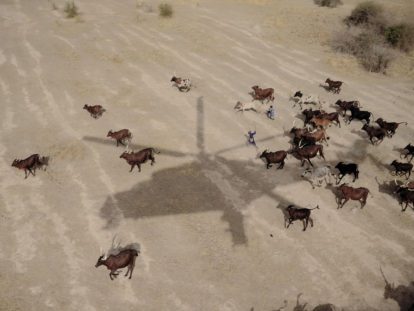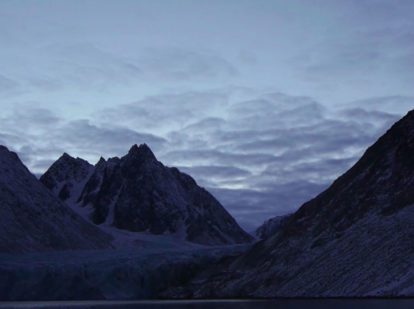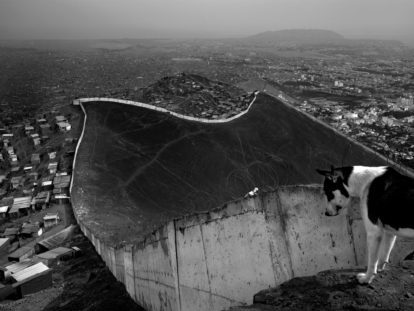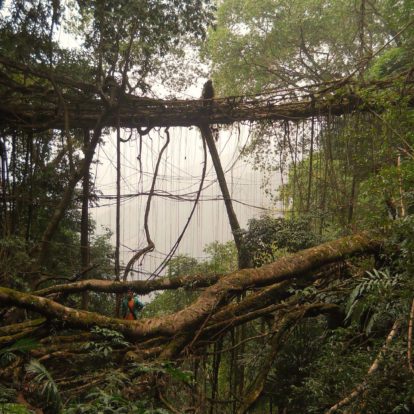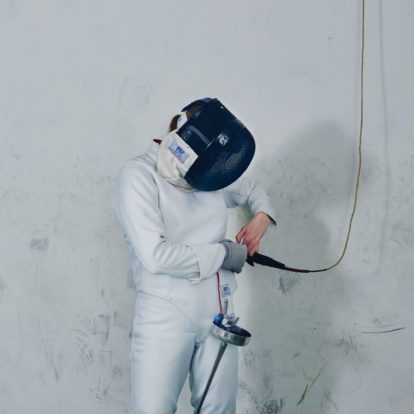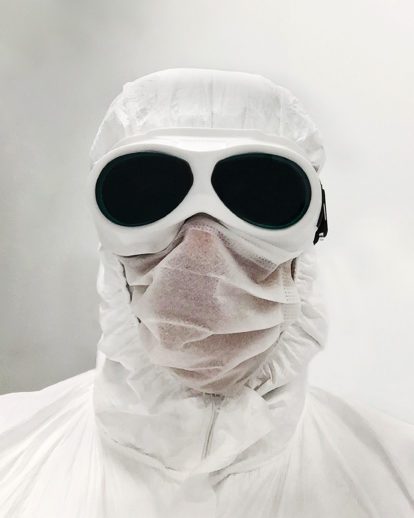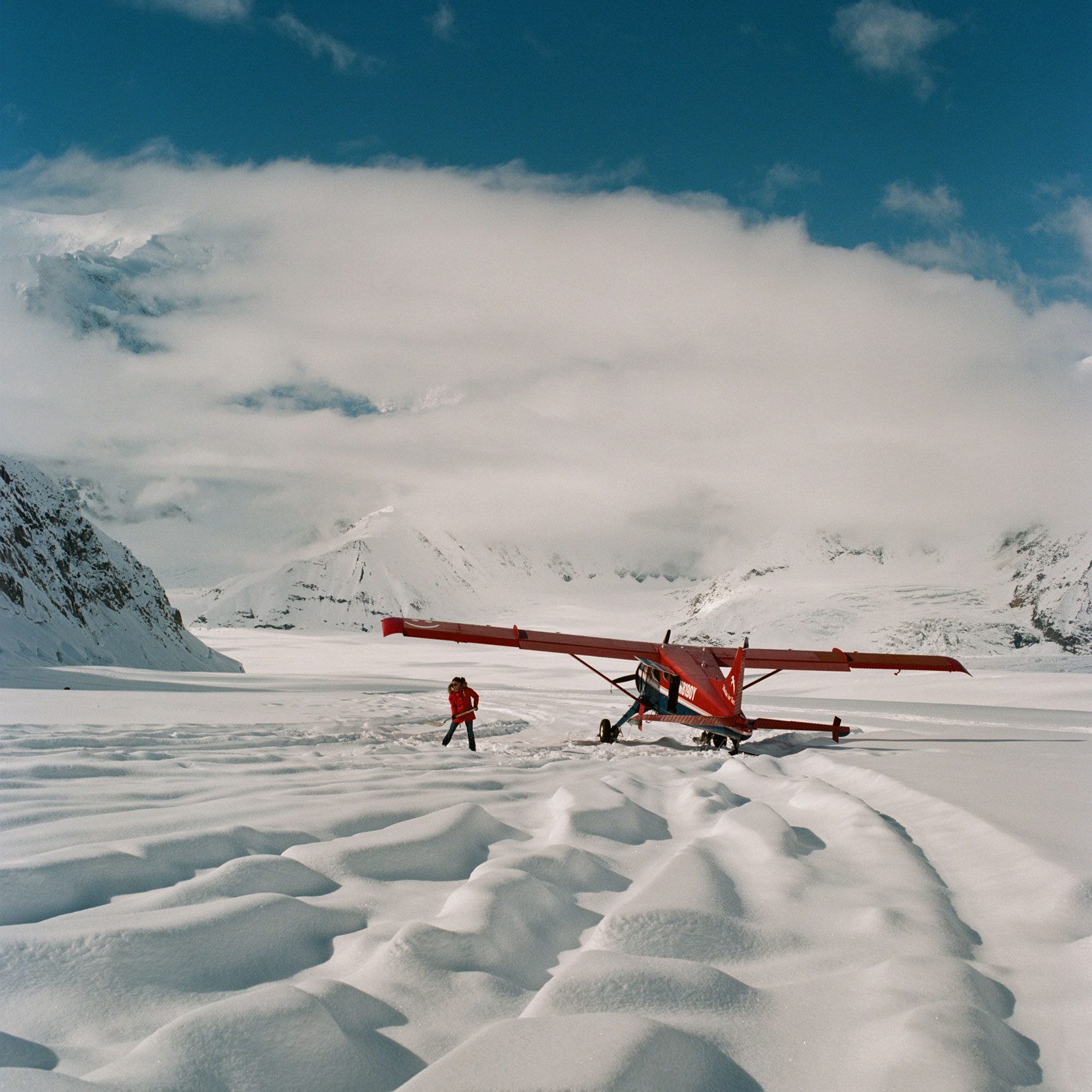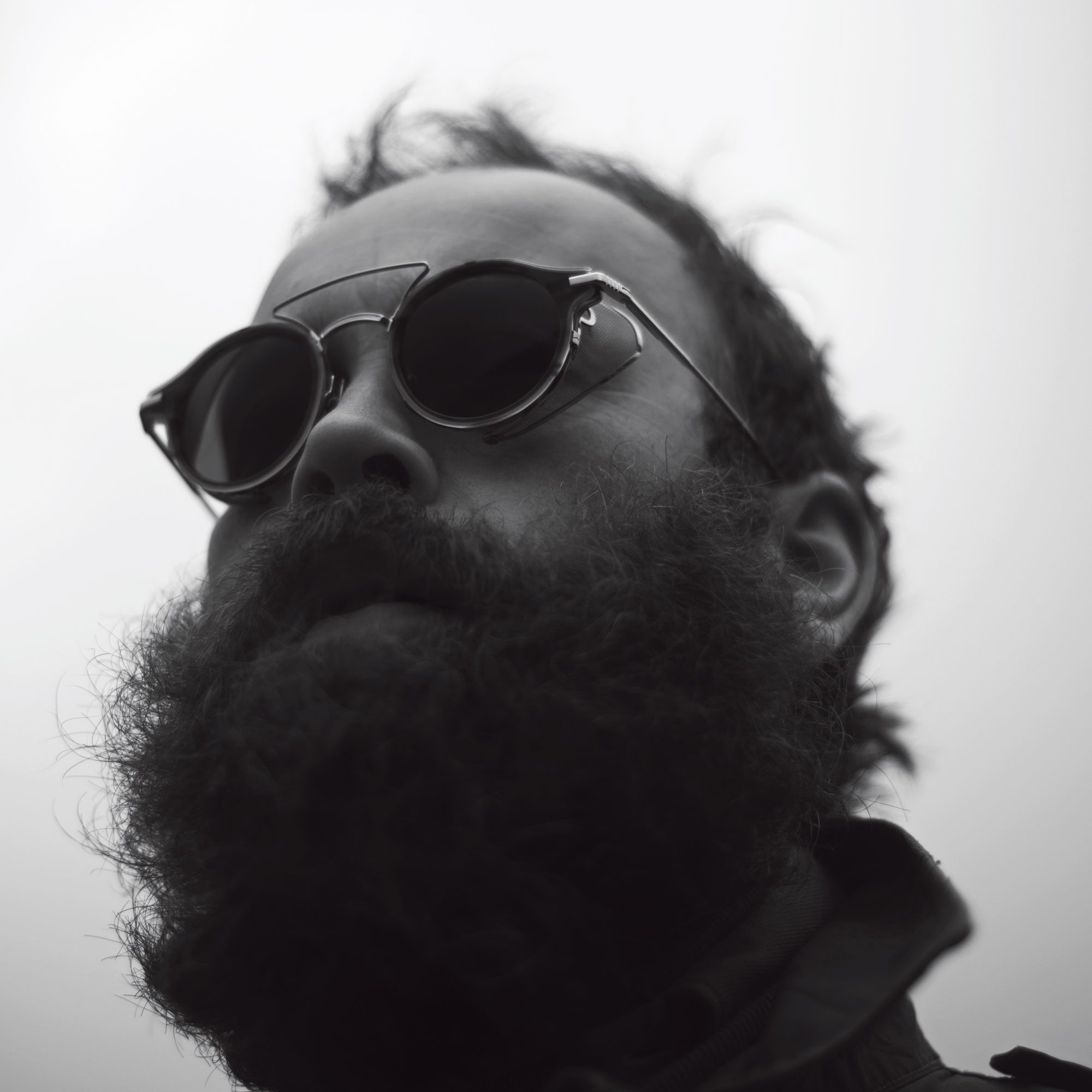In the summer of 1999, the photographer Viktor Mácha went on holiday with his parents to the Beskid mountains, a range that stretches from the Czech Republic in the west to Ukraine in the east. The mountains are home to vast primeval forests studded with tiny historic towns, but none of this made any impact on the fourteen-year-old’s mind.
‘Only two memories have survived from that time until today,’ he writes, ‘a trip to the dark town of Ostrava [a city in the north east of the Czech Republic] and our way back through Trinec where my father stopped the car for a short break. Across the river there was a huge blast furnace structure rising up and when I rolled down the car window to have a better look a harsh metallic smell hit my nose immediately. That smell of steel changed my life forever.’
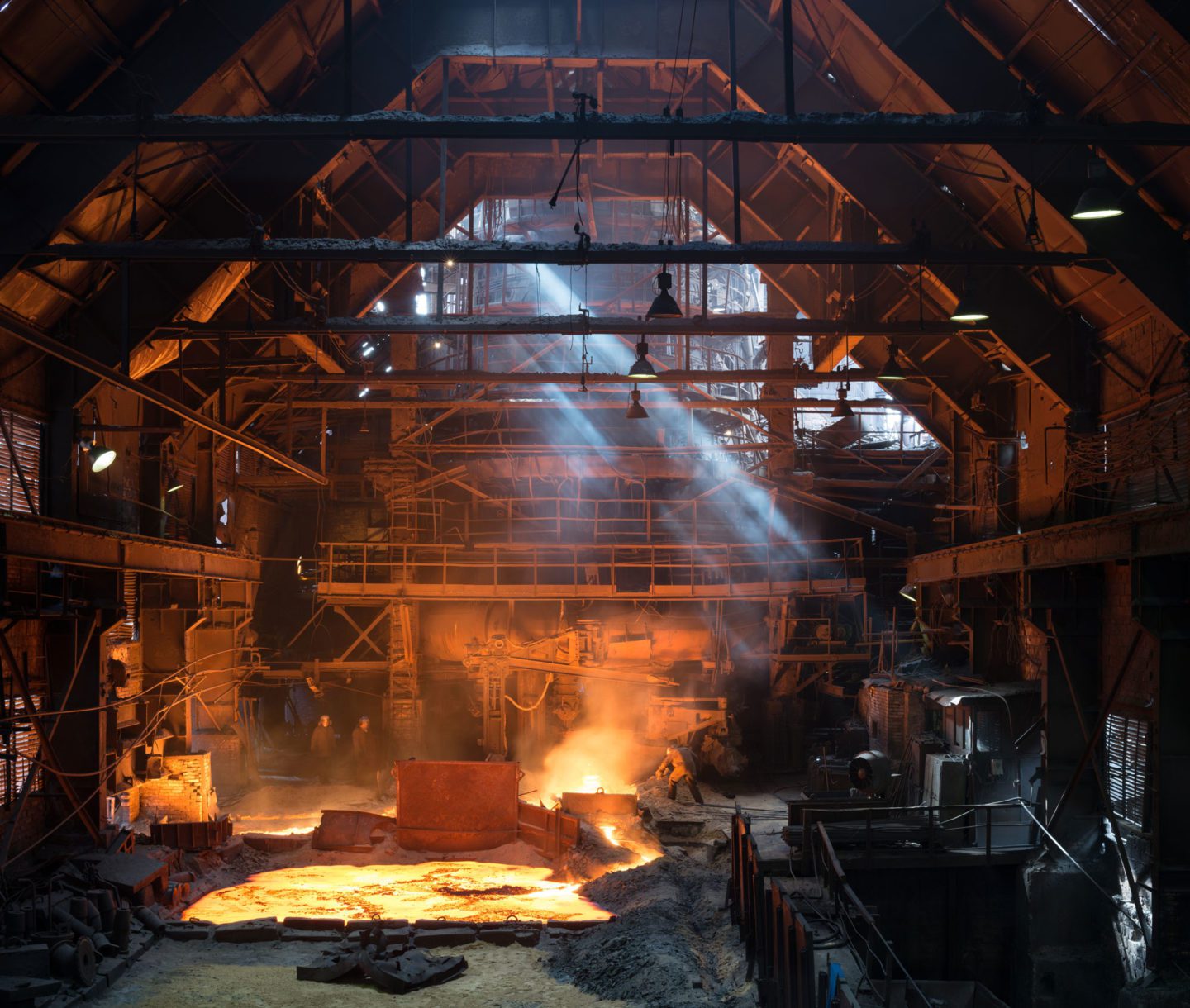
‘A lone figure dwarfed in the temple of labour. But we are entering a new era and leaving the steel gods behind.’ (Kosaya Gora, Russia, 2015).
When it comes to Damascene conversions, this possibly ranks among the strangest. Yet Mácha has translated his obsession into an extraordinary body of photography. Many of the images he has taken of steelworkers in different factories across the world have an epic quality, like something out of Dante’s Inferno – though when I raise this with him, he responds wrily that ‘Dante’s last circle of hell was frozen’. (The sixth was definitely fiery.) He counters too the idea that there is anything infernal about working in a steel factory, ‘even though it may look like that for many. Heavy industry is something utterly real. Working in extreme conditions with all the dust, high temperatures, no sky the whole day and tremendous noise, in order to transform the raw materials into something new is an overwhelming physical experience.’
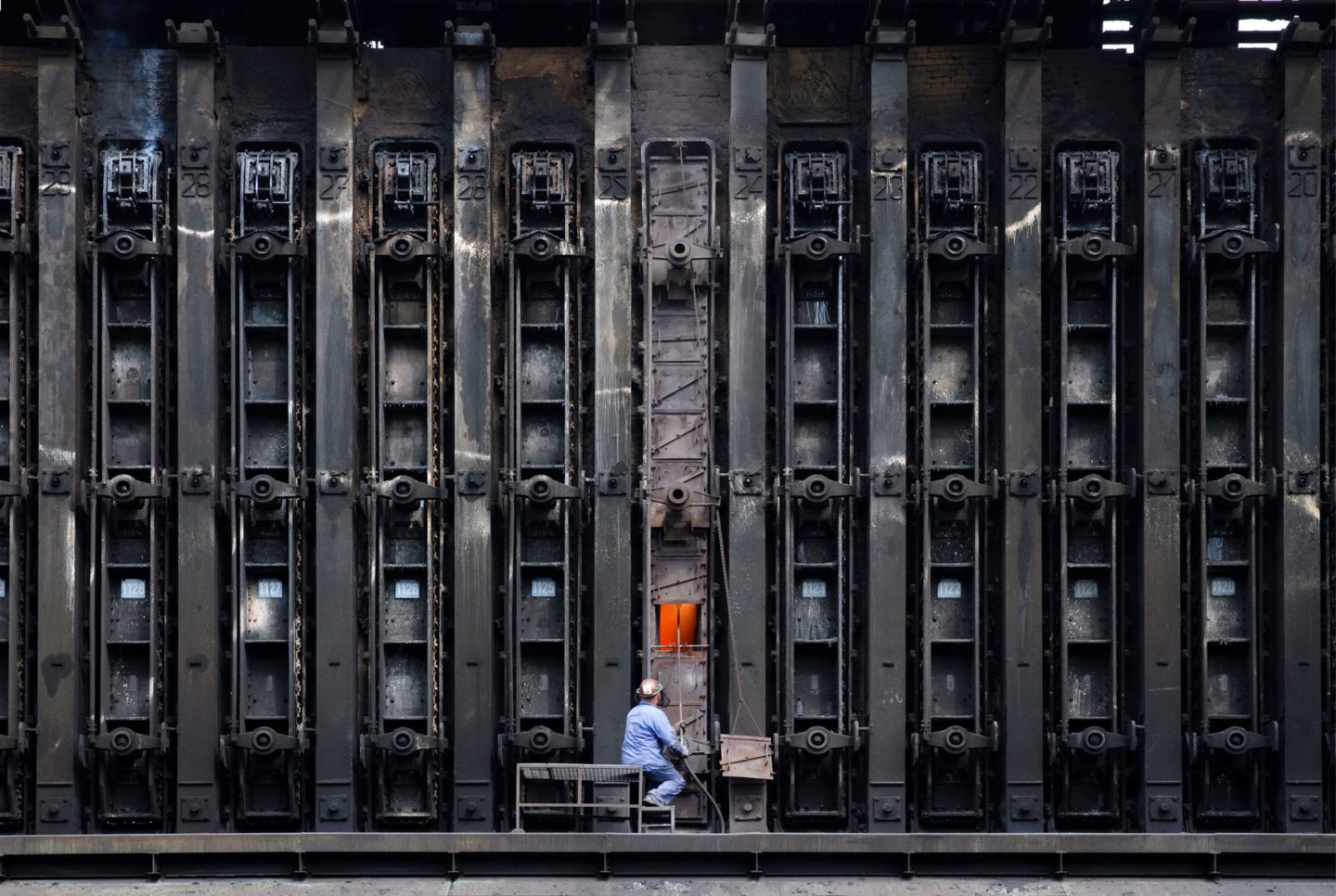
‘You simply cannot switch off the coke chamber for repair – it needs to stay permanently warm.’ (Ostrava, Czech Republic, 2009).
Mácha has spent over a decade documenting the death of the steel industry. ‘Of course there always will be the need for steel, but processes are changing so fast – because of automation, green policy, and health and safety regulations. The dark mysterious world has come to its end.’ Widespread steel production is, as Mácha puts it, ‘the story of the twentieth century’. It aided rapid urban expansion (not least in enabling skyscrapers), underpinned sophisticated technologies for the military, enabled a proliferation of transport networks and enhanced everyday products ranging from cars to saucepans. Steel will continue to be crucial in the twenty-first century, but the story of its production is changing. A surge of factories in China and the consequent abundance of cheap steel has been putting pressure for years on factories in Europe and America that were already struggling. This combined with unpredictable economic growth is ringing the death knell for many. Trump’s tariffs are doing little to help matters.
‘A dead body in a mill can cause serious problems. So the workers took the body, put it on the other side of the fence and called the ambulance.’
Viktor Mácha
These photographs, then, are a tribute to the lives of those being left behind in the West and former Soviet Union. Where so many see factories as satanic mills, the embodiment of oppressive work cycles, ugly architecture and pollution, Mácha sees ‘a story of thousands of workers passing the knowledge of steel making and shaping from generation to generation.’ He is struck already by the fact that, ‘US and EU mills are half empty while Russian plants are overcrowded with workers. A couple of years ago I entered an integrated plant in the Urals and was told they had “just” 25,000 workers. You would never see this in the West, where automation has reduced jobs dramatically.
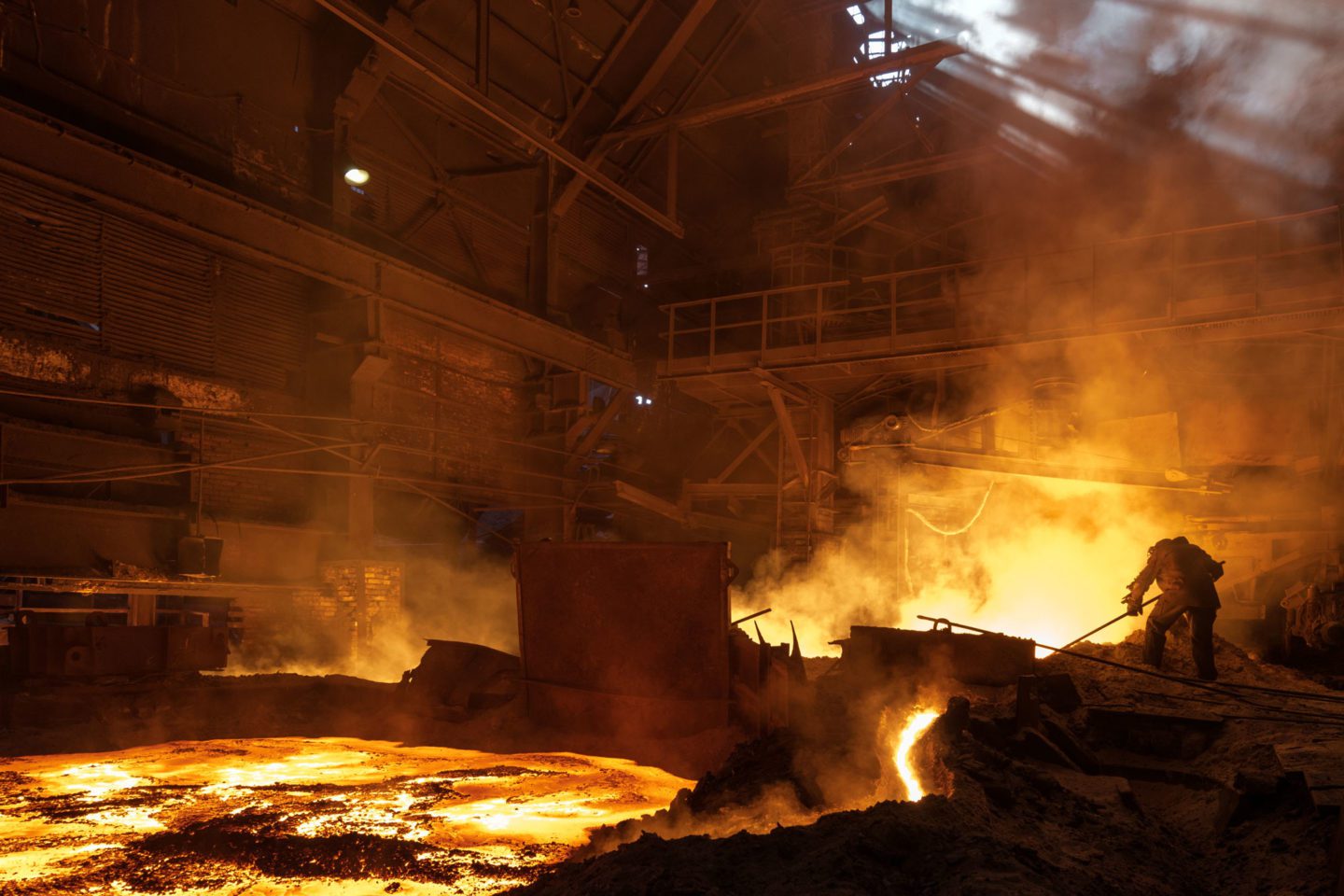
‘Imagine an environment so hot that you can’t even hold the camera in your hands. The melted ferromanganese is far hotter than melted pig iron – it makes working there a hell. I was half dead after 30 minutes shooting.’ (Kosaya Gora, Russia, 2015).
In Russia they still believe in the idea of “social responsibility” where every button or lever is operated by a single individual – a clever idea, because it stops unemployment.’ He continues, deadpan, ‘Unemployment makes people think, and thinking never brings anything good – from a political point of view…’
Some of the personal stories Mácha has heard on his visits sound like tragedies penned by Dostoyevsky. ‘In one old foundry near my hometown, there was a very good and responsible worker. He loved his job and his buddies and had worked there for over 27 years. Even though he lived nearby he always rode to work on his old bicycle. One day the foundry went bankrupt and all the workers lost their jobs. I returned to take photographs of the demolition in progress. That guy was there too. He had been hired by the demolition company to help dismantle his own beloved foundry. I met him regularly until the foundry was taken down to the very last brick, then we both went our separate ways. Several days later, by chance, I came across an article in the regional newspaper. The headline read “Cyclist dead after being hit by car.” It was him. He died just one day after the demolition works ended.’
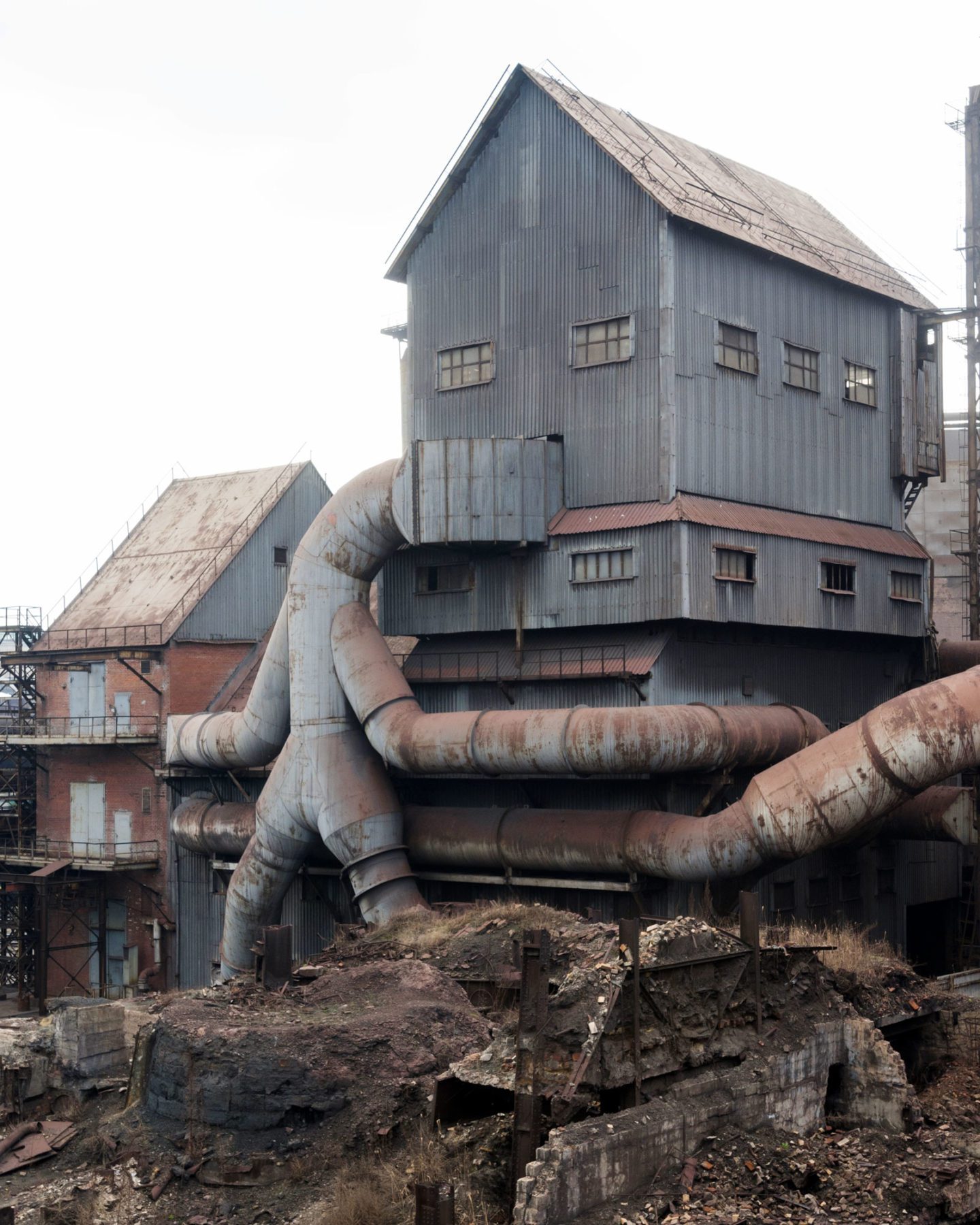
‘Creature of industry’ (Donetsk, Ukraine).
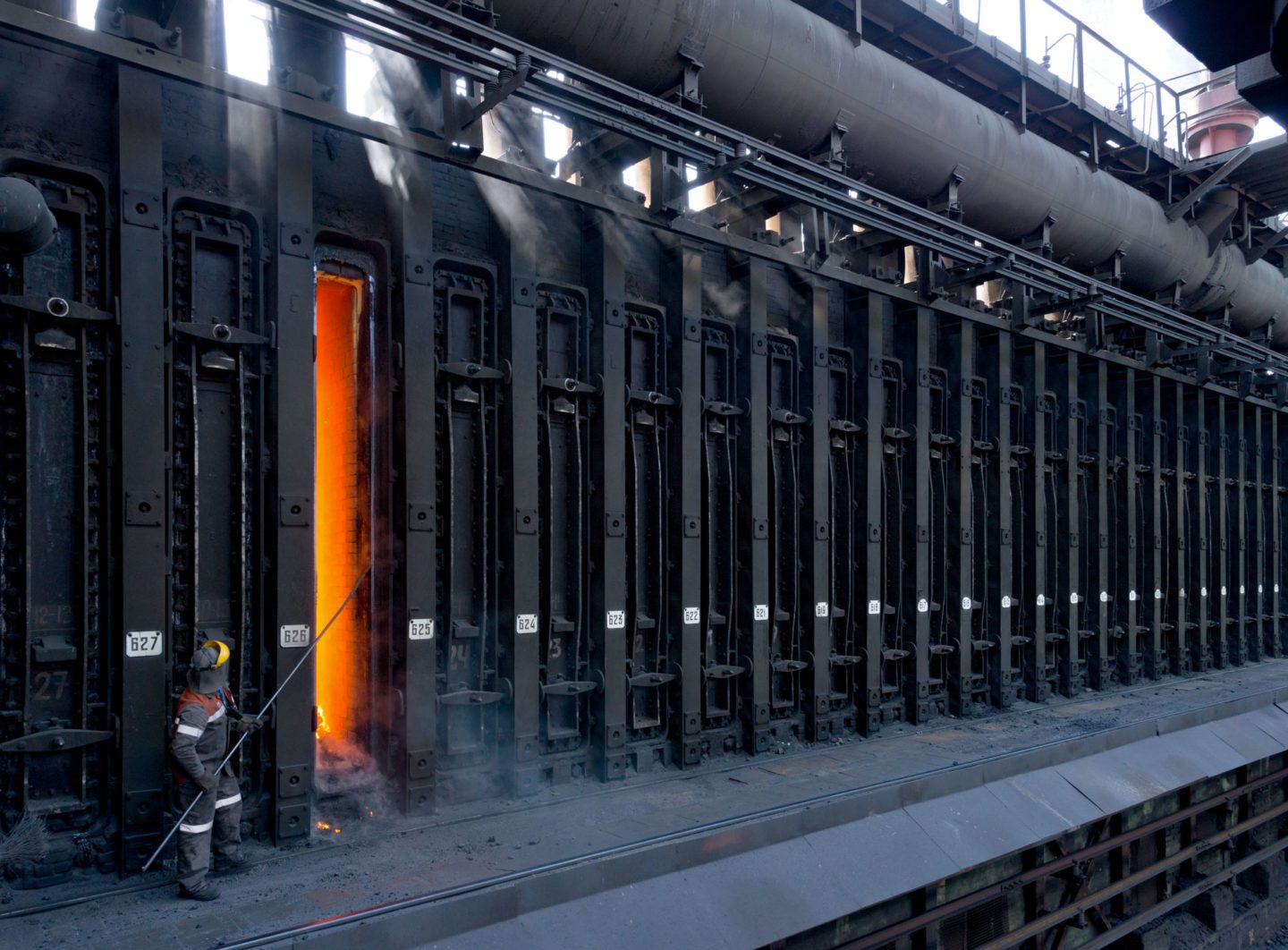
‘The destiny of every coke plant is to run forever or die. Once the battery gets cold, it cannot be restored. A red glow is always a good sign.’ (Kamenskoe, Ukraine, 2015).
There are more controversial stories. The history of heavy industry is blighted by terrible accidents. Mácha refuses to identify even the country of one of the factories he visited where he heard about an incident where ‘a ladle crushed one worker and caused instant death. It was a tragedy, but it also raised questions about health insurance, and bureaucracy. A dead body in a mill can cause serious problems. So the workers took the body, put it on the other side of the fence and called the ambulance. Because the accident was then seen to have happened outside the plant territory, it made it easier for the factory to handle.’
Mácha has visited more than 250 steel mills and foundries across the Soviet Union, Europe and America. Aside from accidents, management fears about terrorism and industrial espionage means it is often extremely hard to gain access. ‘It can take months sometimes even years to get permission to photograph a mill,’ he says. ‘Even if you get a pass that doesn’t guarantee you a successful visit. A couple of years ago I went to the Urals with a colleague, but though everything had been cleared for our visit, when we got there a lady told us that because they had had management changes we could no longer get in. We’d travelled over 3,000 miles for nothing.’
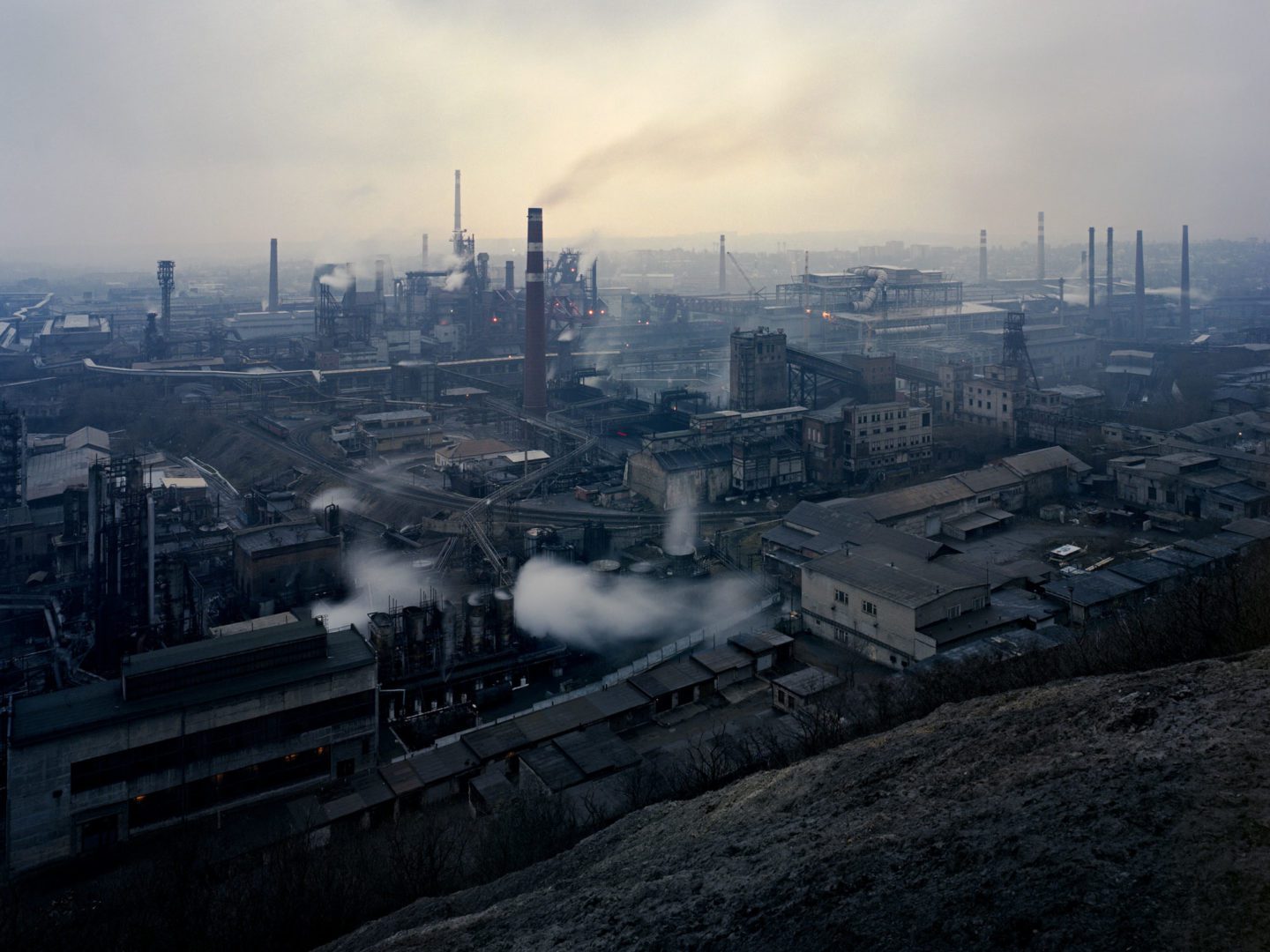
‘Donetsk used to be hardcore industrial town in Eastern Ukraine. The war changed everything. Damaged railroads, no ore from the west, no coal from the north...’ (Donetsk, Ukraine, 2012)
Mácha’s images are as remarkable for the mammoth machine structures that they chronicle as for the humans operating it. He becomes rhapsodic when I ask him about this aspect of his work. ‘In general, blast furnaces [in which base metals are extracted from ores] and rolling stands [where the metal is rolled out into an even shape] drive me absolutely crazy. Every single blast furnace is different and especially beautiful. The rolling stands are in a slightly different category. You can see how the big fat piece of steel is shaped into something new, like modelling clay, just way hotter.’
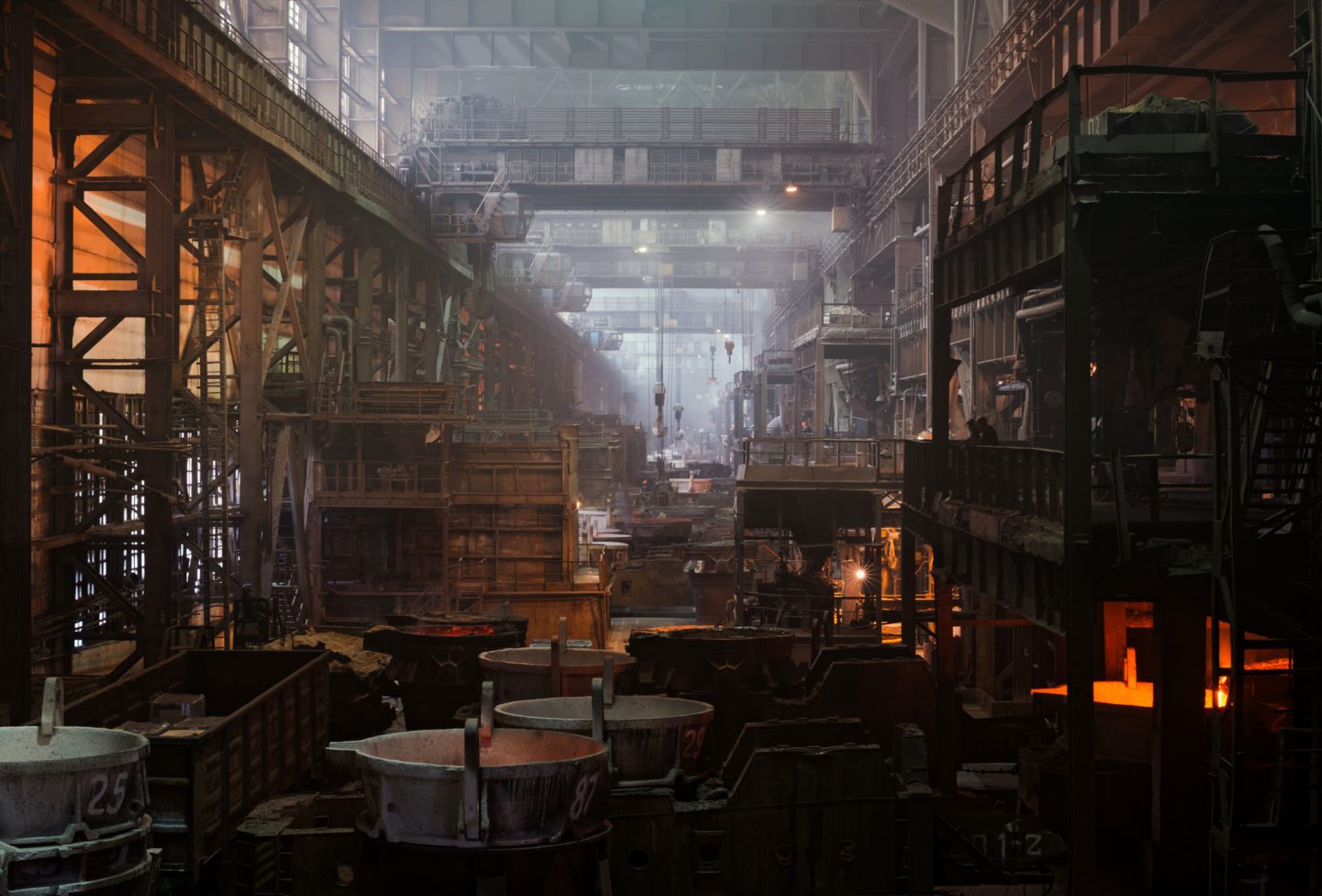
The endless melting shop of Nikopol ferroalloy works is one of the largest of its kind worldwide. (Nikopol, Ukraine, 2015).
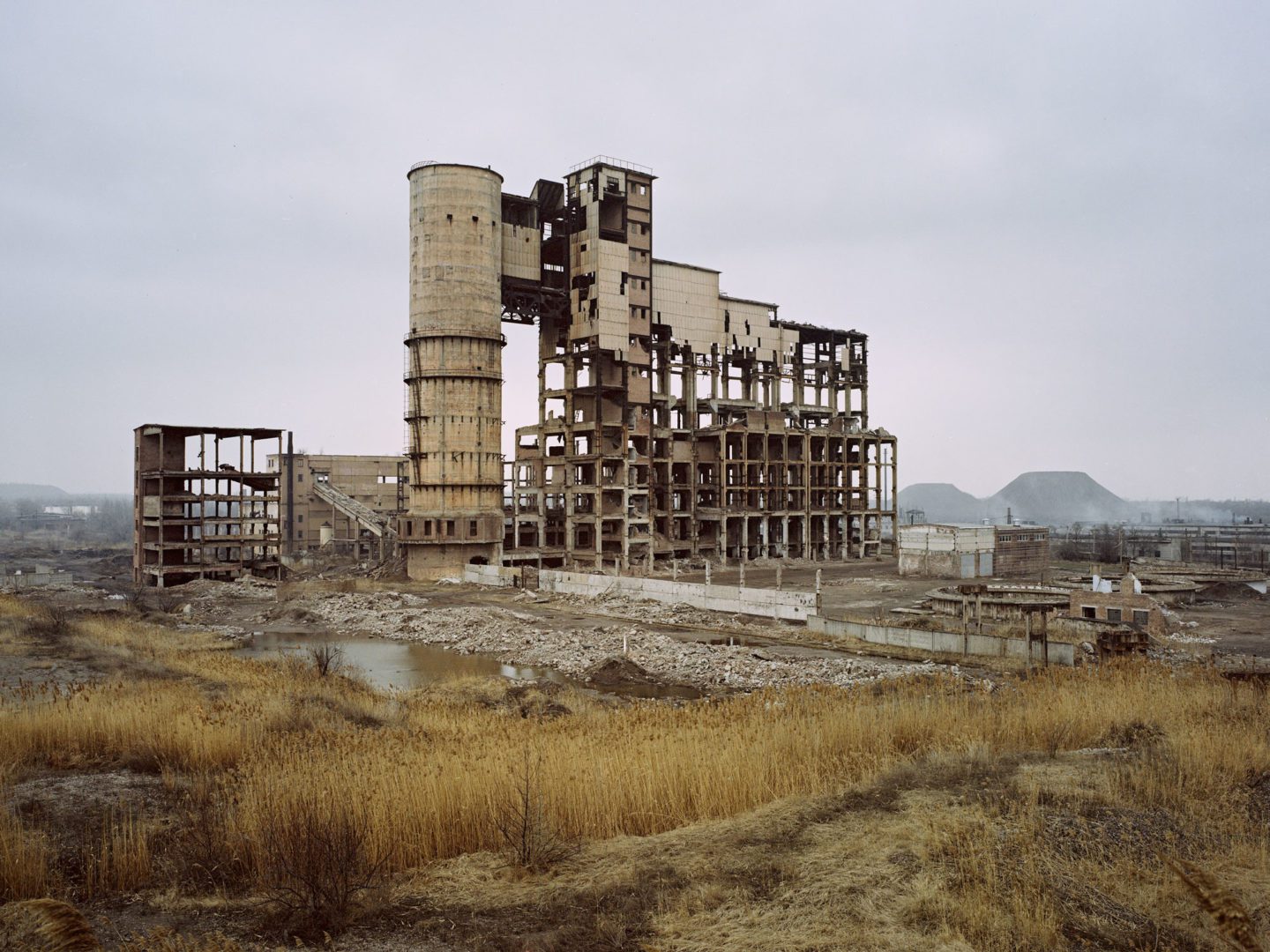
‘This silent statue in Donbass was demolished in 2012 soon after my visit like many other industrial monuments in Eastern Ukraine. A battlefield today.’ (Horlivka, Ukraine, 2012).
He is strongly influenced by Bernd and Hilla Becher, the German conceptual artists and photographers who inspired generations of documentary photographers with their images of industrial buildings and structures. ‘Shooting the rolling stands when the hot steel runs through them is utterly satisfying when you view the images on a large scale. When you shoot five or ten you don’t exactly realise it. But when you put 20 or 30 rolling stand photos next to each other, the typological regularity stands out – it’s like finding the ideal form as the Bechers described it.’
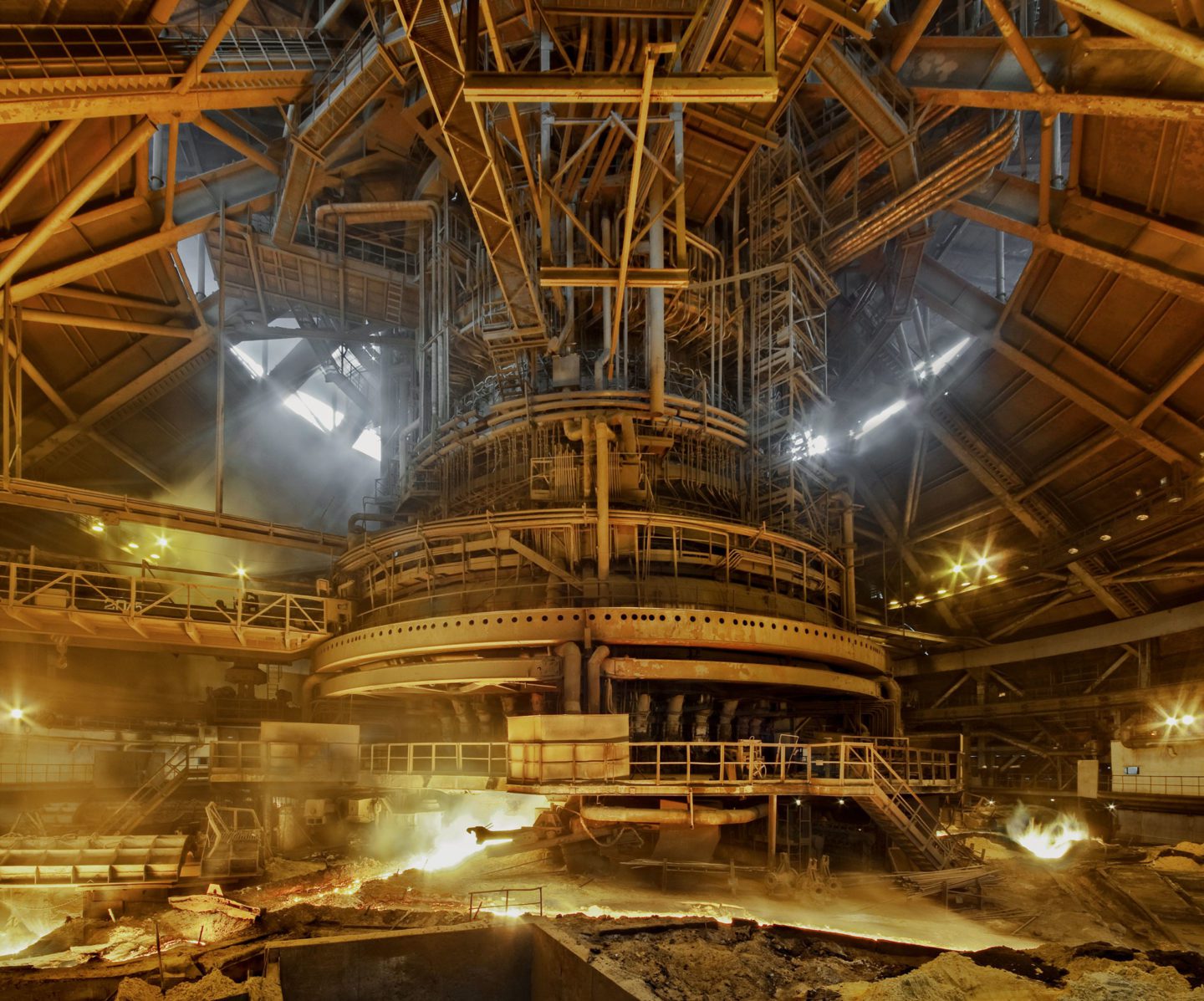
I ask him if – from his epic more-than-a-decade-long tour – there are any factory visits that stand out. ‘I remember visiting a typical Soviet-integrated plant in Mariupol, [in the south east of] Ukraine,’ he replies. The visit was during the wildest month of the Russian-Ukrainian conflict, and the battlefront was just two kilometres away from the fence. There was rumbling inside the plant and rumbling far outside. You couldn’t really distinguish between the noises produced by the mill and the heavy artillery. War is loud.’
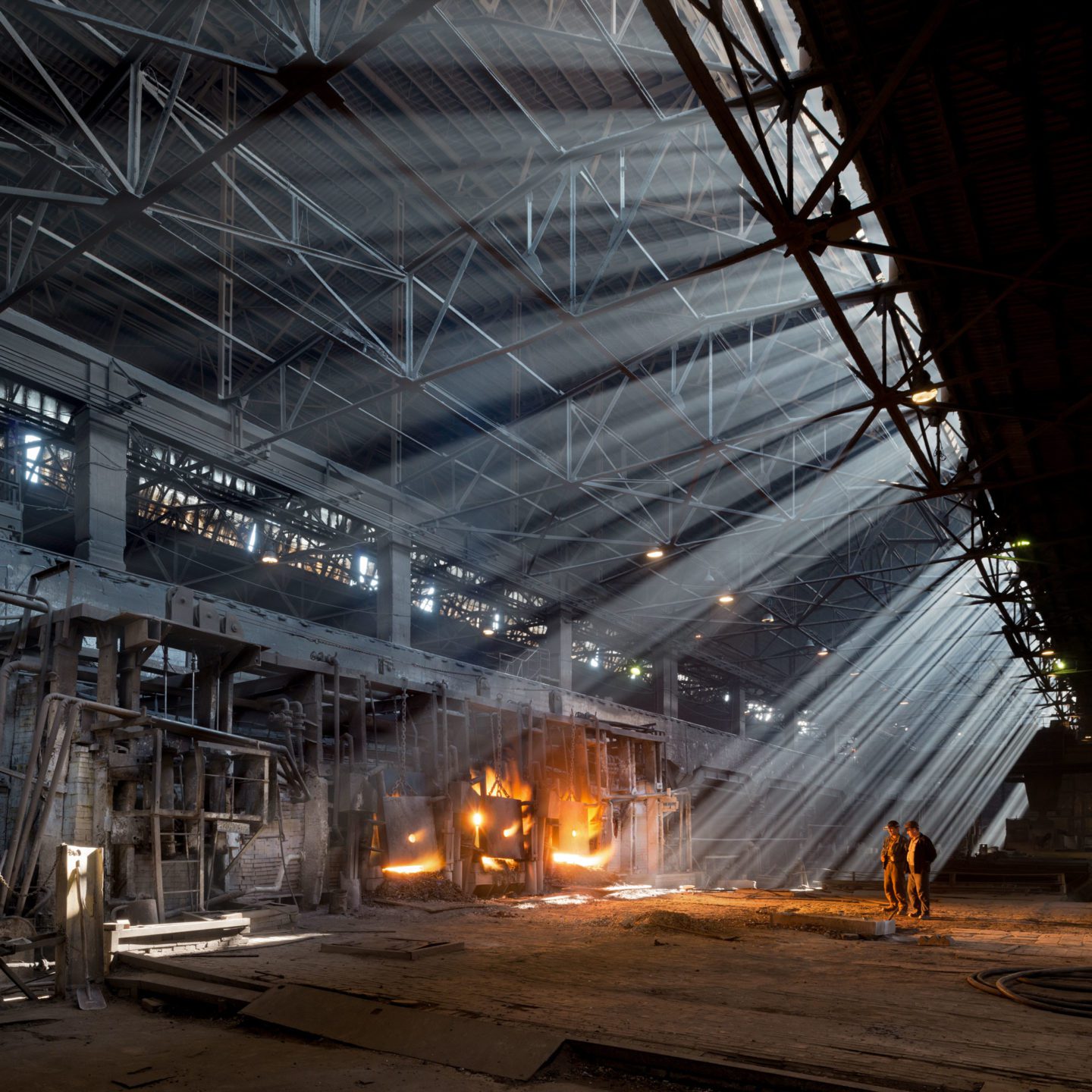
He talks also of a steel mill, Poldi Kladno, in the Czech Republic, ‘one of the legends of the European steel industry. In the glory days of the Seventies the mill provided jobs for almost 20,000 workers. However political turbulence in the Nineties was compounded by bad management and corruption, and it went bankrupt in 2015. But there is still a spark of life smouldering deep within the large, mostly abandoned, decaying factory. Inside is a small privately-owned forge, with just eight workers to represent the faded gory of Poldi. I have visited this forge several times – though the average age of the workers is 55, they are still very much alive and kicking.’
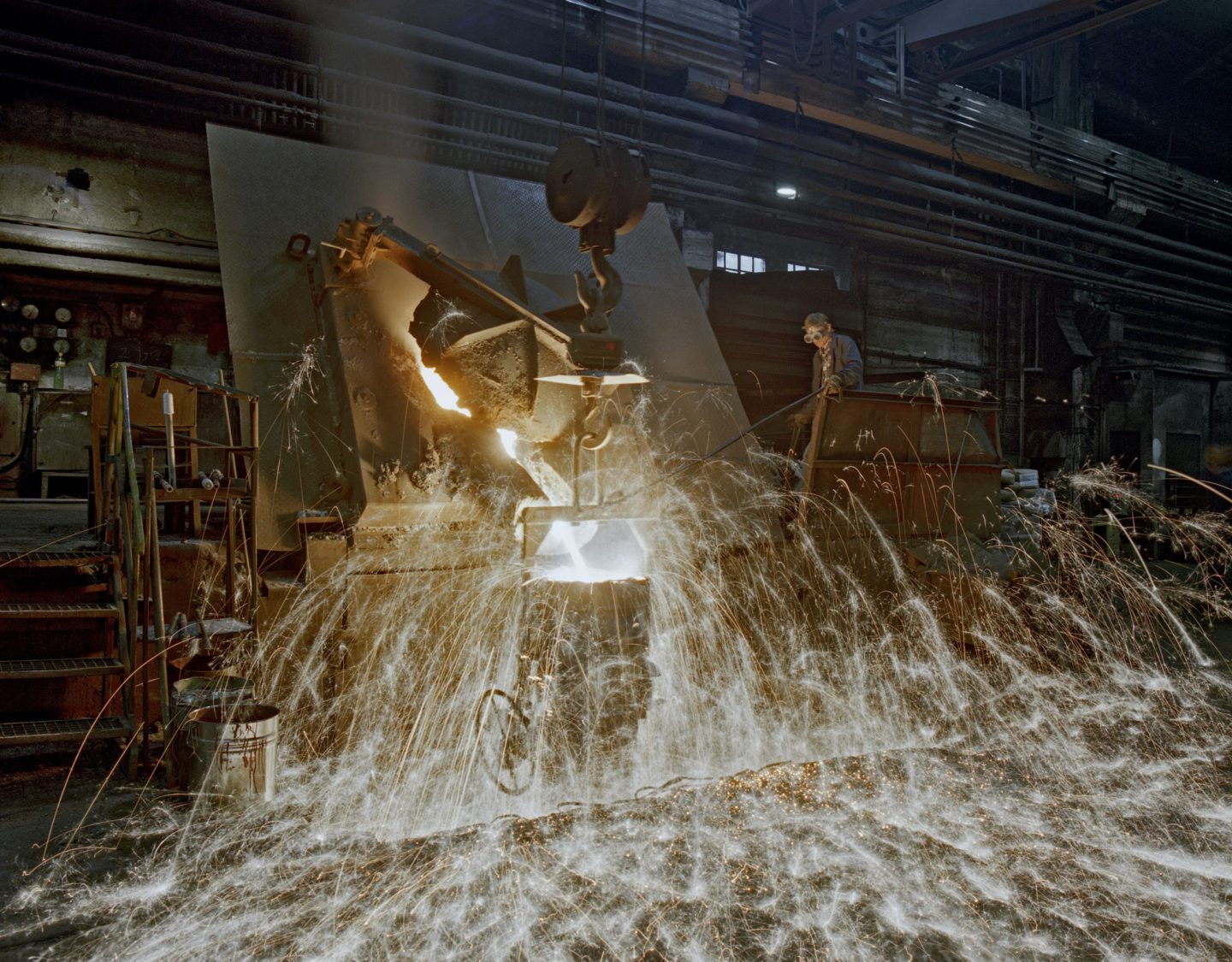
‘Tapping an induction furnace can burn your shoes, literally. But if your shots are not good enough, you haven’t been close enough.’ (Vsetin, Czech Republic, 2012).
There is one particular trip that sums up for Mácha the state of the steel industry he so loves. ‘Michael Cimino’s 1978 film The Deer Hunter [the epic drama in which three steelworkers’ lives are changed forever after they fight in the Vietnam War] takes place in Weirton, an old-school steel town in West Virginia. It used to have a dark noisy mill right at the centre and its bars were full of workers. I got a chance to visit this very town in 2015. The old inefficient steel mill is gone, the bars are closed for good and the town is half dead.’
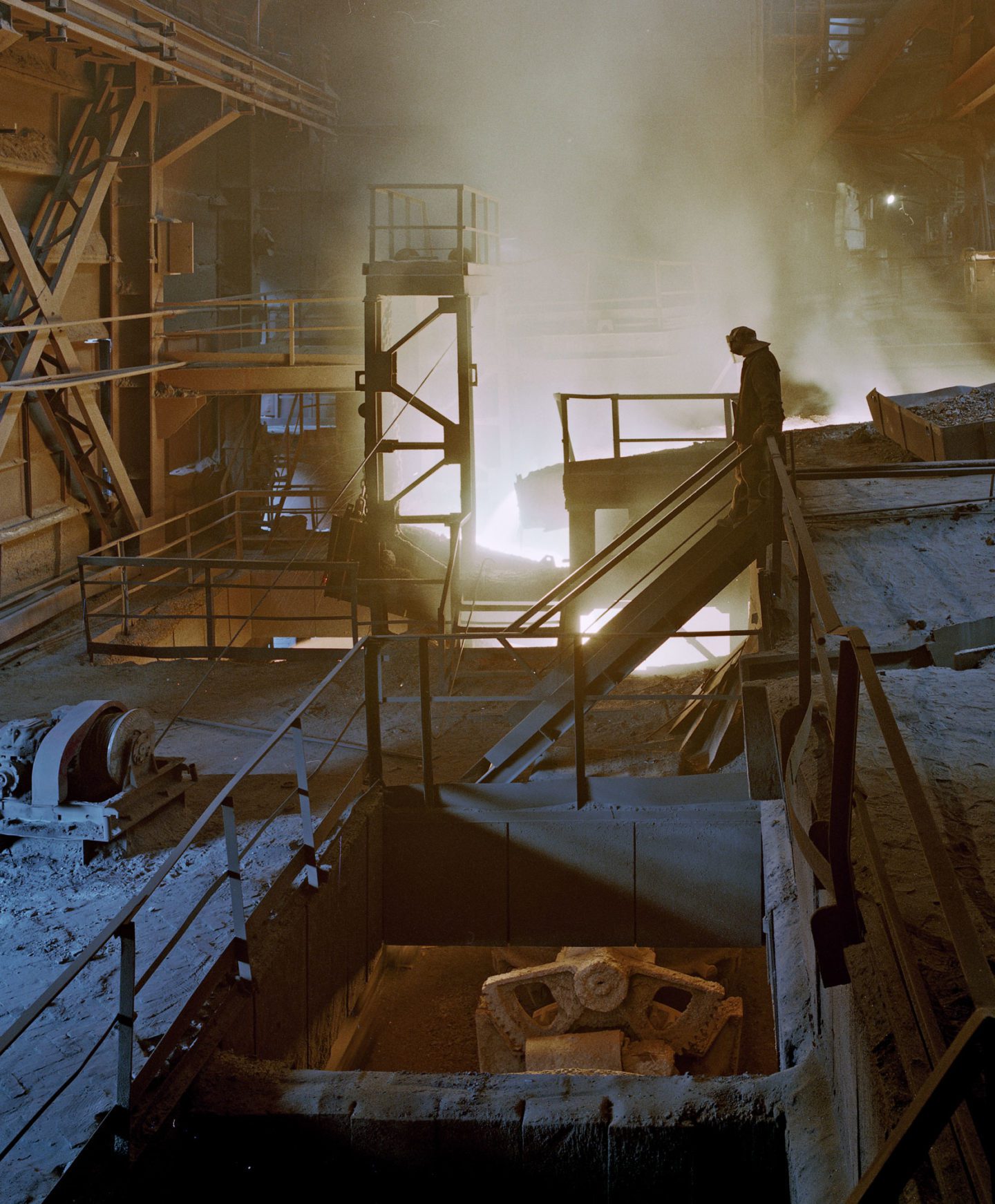
Dneprodzerzhinsk, Ukraine, 2012.
He concedes there are upsides, but for Mácha, the passion for industry will always prevail. ‘Some residents are happy to have clean air finally. Yet it comes at a high price. You can see the same scenario in every heavy industrial region worldwide. The steel rush is over, we are walking towards a new, greener world. But it is a little less happy and a little less human.’
